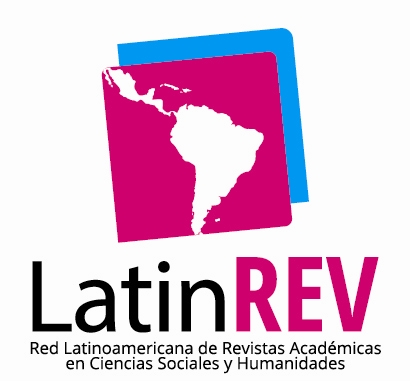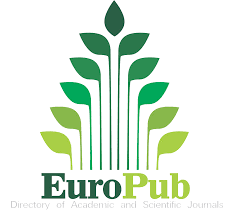Estrategias dinámicas para la ventaja competitiva en la era digital: Un modelo conceptual
DOI:
https://doi.org/10.62325/10.62325/yachana.v13.n1.2024.899Palabras clave:
Administración de empresas, Gestión del conocimiento, Liderazgo, Sociedad de la Información, Conceptualización.Resumen
Este estudio de cinco años (2018-2022), explora la ventaja competitiva sostenible en la era digital, centrando su atención en la adopción de tecnologías emergentes y la transformación digital. El objetivo principal es comprender cómo las empresas nativas digitales, mediante su adaptabilidad y gestión del conocimiento, están redefiniendo la competitividad en el mercado contemporáneo. Metodológicamente, el estudio adopta un enfoque bibliográfico y documental, analizando datos y tendencias actuales en bases de datos académicas relevantes. La integración del Gartner Hype Cycle® for Emerging Technologies proporciona una perspectiva única sobre la relevancia temporal y el impacto real de las innovaciones tecnológicas, permitiendo diferenciar entre modas pasajeras y tecnologías genuinamente competitivas. Los resultados clave muestran que las empresas digitales nativas, con su enfoque en la gestión del conocimiento y la adaptabilidad, están estableciendo nuevos estándares en eficiencia y respuesta al mercado. Además, se resalta que la ventaja competitiva sostenible se logra no solo a través de capacidades tecnológicas sino también mediante una
cultura organizacional enfocada en la innovación y estrategias que prioricen la sostenibilidad y la agilidad. Las conclusiones enfatizan la importancia de una cultura de innovación y una estrategia que abrace la sostenibilidad y la agilidad organizativa para alcanzar una ventaja competitiva sostenible en un mercado en constante evolución.
Descargas
Citas
Abbasi Kamardia, A., Amoozad Mahdiraji, H., Masoumi, S., & Jafari-Sadeghi, V. (2022). Developing sustainable competitive advantages from the lens of resource-based view: evidence from IT sector of an emerging economy. Journal of Strategic Marketing. https://doi.org/k3td
Akin, T. (2021, February 01). Tesla's advantage: EVs cannot succeed without developing parallel supercharging networks. UCDavis. https://ibit.ly/zU2wi
Ashton, K. (2009, June 22). That ‘Internet of Things’ Thing. RFID Journal. https://ibit.ly/DUjwN
Barney, J. B. (1991). Firm resources and sustained competitive advantage. Journal of Management, 17(1), 99-120. https://ibit.ly/Yz7Iv
Bharadwaj, A., El Sawy, O. A., Pavlou, P. A., & Venkatraman, N. (2013, June 1). Digital business strategy: toward a next generation of insights. MIS Quarterly, 37(2), 471-482. https://ssrn.com/abstract=2742300
Brynjolfsson, E., & McAfee, A. (2014). The Second Machine Age: Work, Progress, and Prosperity in a Time of Brilliant Technologies. W. W. Norton & Company. https://ibit.ly/3JyZM
Burns, T., & Stalker, G. M. (1961). The management of innovation. Oxford University Press. https://ibit.ly/Rz6hZ
Davenport, T. H. (2013, December). Analytics 3.0. Harvard Business Review.
https://hbr.org/2013/12/analytics-30
Geissdoerfer, M., Vladimirova, D., & Evans, S. (2018, October). Sustainable business model innovation: A review. Journal of Cleaner Production, 198. https://doi.org/gf8mmh
Gobble, M. M. (2015, December 28). Regulating innovation in the new economy. Research-Technology Management, 58(2), 62-67. https://tinyurl.com/38uas2r9
Helfat, C. E., & Peteraf, M. A. (2003, September 12). The dynamic resource-based view: Capability lifecycles. Strategic Management Journal, 24(10), 997-1010. https://doi.org/dtcxcn
Jarosiński, M., Sekliuckiene, J., & Kozma, M. (2022). Born Digitals: Understanding the Sustainable Competitive Advantage Across Different Markets. In Artificiality and Sustainability in Entrepreneurship (pp. 1-20). https://doi.org/k3tb
Javaid, M., & Khan, I. H. (2021). Internet of Things (IoT) enabled healthcare helps to take the challenges of COVID-19 Pandemic. Journal of oral biology and craniofacial research, 11(2), 209–214. https://doi.org/k3wk
Mahdi, O. R., & Nassar, I. A. (2021). The Business Model of Sustainable Competitive Advantage through Strategic Leadership Capabilities and Knowledge Management Processes to Overcome COVID-19 Pandemic. Sustainability, 13(17).
Marr, B. (2016). Big Data in Practice: How 45 Successful Companies Used Big Data Analytics to Deliver Extraordinary Results. Wiley. https://tinyurl.com/3wec343n
Mayer-Schönberger, V., & Cukier, K. (2013). Big data. La revolución de los datos masivos (Big Data: A Revolution That Will Transform How We Live, Work, and Think). Turner Publicaciones. https://ibit.ly/2EY-3
Moore, J. F. (1996, April 1). The Death of Competition: Leadership and Strategy in the Age of Business Ecosystems. Harper Business. https://tinyurl.com/57rcpwcm
Neely, A., Gregory, M., & Platts, K. (1995, April 1). Performance measurement system design: A literature review and research agenda. International Journal of Operations & Production Management, 15(4), 80-116. https://doi.org/cmm2rh
Perri, L. (2022, August 10). What`s New in the 2022 Gartner Hype Cycle® for Emerging Technologies. Gartner. https://ibit.ly/hi3zv
Porter, M. E. (1985). Competitive Advantage: Creating and Sustaining Superior Performance. The Free Press. https://ibit.ly/oiBfQ
Pousttchi, K., & Dehnert, M. (2018, January 13). Exploring the digitalization impact on consumer behavior in retail banking. Electronic Markets, 28, 265-286. https://doi.org/gd7sg3
Ramadan, M., Shuqqo, H., Qtaishat, L., Asmar, H., & Salah, B. (2020). Sustainable Competitive Advantage Driven by Big Data Analytics and Innovation. Applied Sciences, 10(19). https://doi.org/gngf33
Russell, S. J., & Norvig, P. (2010). Artificial Intelligence: A Modern Approach (3 rd ed.). Pearson. https://tinyurl.com/47n5csax
Schein, E. H. (2010). Organizational Culture and Leadership (4 th ed.). Jossey-Bass. https://is.gd/eLeJOd
Sebastian, I.M., Ross, J.W., Beath, C.M., Mocker, M., Moloney, K., & Fonstad, N.O. (2020, April 8). How Big Old Companies Navigate Digital Transformation. MIS Q. Executive, 16(3), 197-213. https://tinyurl.com/26cm256f
Sutcliffe, K. M., & Vogus, T. J. (2003). Organizing for resilience. En K. S. Cameron, J. E. Dutton, & R. E. Quinn (Eds.), Positive organizational scholarship: Foundations of a new discipline (pp. 94-110). Berrett-Koehler. https://tinyurl.com/mryt26f7
Tapscott, D., & Tapscott, A. (2016). Blockchain Revolution: How the Technology Behind Bitcoin Is Changing Money, Business, and the World. Portfolio Penguin. https://tinyurl.com/ytx27482
Teece, D. J. (2007, August 7). Explicating dynamic capabilities: the nature and microfoundations of (sustainable) enterprise performance. Strategic Management Journal, 28(13), 1319-1350. https://doi.org/dhw27m
Teece, D. J., Pisano, G., & Shuen, A. (1997, August). Dynamic capabilities and strategic management. Strategic Management Journal, 18(7), 509-533. https://www.jstor.org/stable/3088148
Tidd, J., & Bessant, J. (2009). Managing innovation: Integrating technological, market and organizational change (4 th ed.). Wiley. https://ibit.ly/s47he
Urbanek, G. (2022). Rudiments of Sustainable Competitive Advantage in the Digital Age. Oeconomia, 56(5). https://tinyurl.com/3hujp33j
Westerman, G., Bonnet, D., & McAfee, A. (2014). Leading Digital: Turning Technology into Business Transformation. Harvard Business Review Press. https://ibit.ly/NuvxE
Publicado
Cómo citar
Número
Sección
Licencia
Derechos de autor 2024 Yachana Revista Científica

Esta obra está bajo una licencia internacional Creative Commons Atribución-NoComercial 4.0.


















